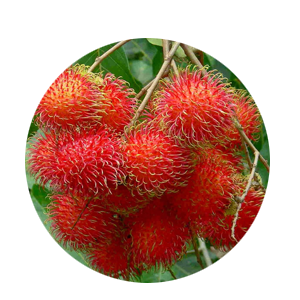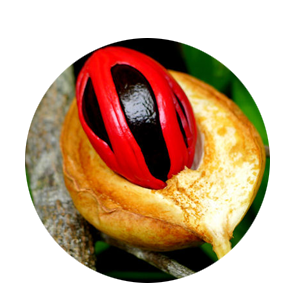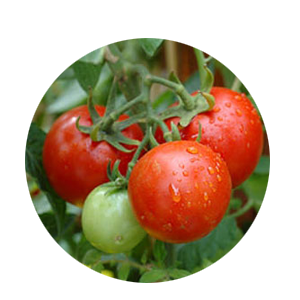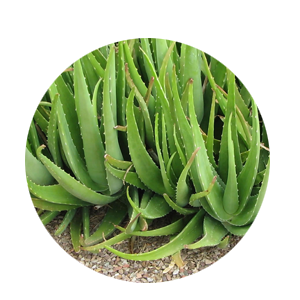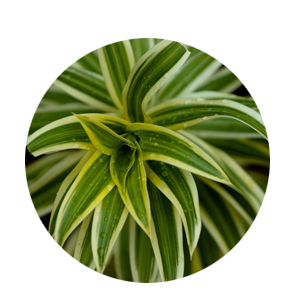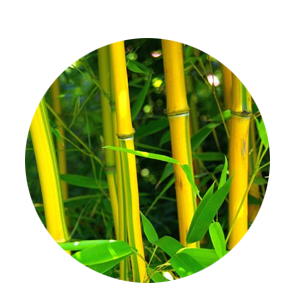Fig - Israel Small Leaf - (8x10 bag)

Item Description
GENERAL INFORMATION ABOUT A FIG TREE Fig (Ficus carica) is an Asian species which is from mulberry family. It is an important crop in those areas where it is grown commercially. The origin of Fig fruit is from Middle East and Western Asia. It has been sought out and cultivated since ancient times, and is now widely grown throughout the world, both for its fruit and as an ornamental and shade plant. Also these shade trees keeping the sun off of our homes and windows during the summer can end up saving us both money and energy, because we can avoid some of the heating effects and keep our homes cooler to begin with, so less energy is required to keep them comfortable. And one of the best ways to do that is by planting shade trees in the right location around our home, where they can block the sun from streaming in our windows and heating our walls and roofs during certain times of the day. SPECIALTY OF ISRAEL FIG There are more than 700 identified varieties of figs. Among very few varieties are popular in India. The Israel Fig is an average size fig and having good taste compared to other varieties. The leaves are small compared to other varieties and much suitable for commercial plantation. The productivity of Israel fig is much better and fruit having slight red and black color when it ripen. HEALTH BENEFITS OF FIGS Figs are high in fiber and a good source of several essential minerals, including magnesium, manganese, calcium (which promotes bone density), copper, and potassium (which helps lower blood pressure), as well as vitamins, principally K and B6. Pectin, present in these fruits moves freely through the body, preventing cholesterol. Fig leaves have been shown to lower triglyceride levels in the body, preventing heart attack and stroke. Dried figs contain phenol, omega 3 and omega 6 fatty acids that help in lowering the risk of coronary diseases. It also helps for weight Loss, better digestive health, anti-diabetic Properties and for Stronger Bones etc...
Maintanance, Disease Management And Yielding
MAINTANACE OF THE PLANTATION Once a plantation has been established, the work should not be considered finished. It will be necessary, for example, to protect the plantation against weather, fire, insects and fungi, and animals. A variety of cultural treatments also may be required to meet the purpose of the plantation. FERTILIZING It is required to do proper fertilizing for a plant for its stable growth and high productivity. For home gardens organic way of cultivation is more advisable and for a commercial plantation to increase the productivity everyone applies chemical fertilizers. Yearly twice fertilization (organic or chemical) is generally recommended. The fig tree mostly requires potassium but does not need much nitrogen fertilizer, which tends to cause over-development of the vegetation and under-development of the fruit. In well-balanced soil one should use a fertilizer such as 4-8-12 (N-Nitrogen/P-Phosphorus/K-potassium such as 1-2-3 or 1-2-2.5). Fertilizeer must be added at the time of rainy season and be placed under the branches of the tree rather than around the foot of the tree. WATERING AND WEED CONTROL Young fig trees should be watered regularly until fully established. In dry western climates, water mature trees deeply at least every one or two weeks. Desert gardeners may have to water more frequently. Mulch the soil around the trees to conserve moisture. Weeding is also very important. Remove all weeds 1.5 meter around the plant. PRUNING AND SHAPE OF TREE The fig tree grows naturally like a bush. This keeps the branches of the tree low, allowing easy gathering of fruit and the renewing of the old master branches, thanks to the sprouts. However this may interfere with working the soil. With appropriate pruning one can give the tree a goblet shape with a single trunk. To do this one must regularly eliminate the sprouts from the base. Fig trees are productive with or without heavy pruning. It is essential only during the initial years. Trees should be trained with a low crown for fig collection and to avoid trunk-breaking limb weight. PEST & DISEASE FOR FIG TREES Every fruit tree has the future potential for disease and insect damage. Factors such as location and weather will play a part in which issues your tree encounters. If available, disease-resistant trees are the best option for easy care; and for all trees, proper maintenance (such as watering, fertilizing, pruning, spraying, weeding, and fall cleanup) can help keep most insects and diseases at bay. HARVESTING YOUR FIGS Grafted, budded or air layered plants will start fruiting from two years onwards after planting. Wait until the figs are ripe to harvest. Figs will not continue to ripen after they are picked like many other fruits. You can tell that it is time for harvesting figs when the fruit necks wilt and the fruits hang down. If you pick a fig fruit too early, it will taste horrible; ripe fruit is sweet and delicious. The skin of the fig is edible. As a result, you do not need to peel the fig before eating it. If you do not like the texture of the skin, you can peel it off before eating the fig. To enjoy the flavor of the interior without removing the skin, simply cut the fig in half.
- Propogation Method : Layering
- Plant Climate : Sub Tropical, Normal, Hot, Cool, Tropical
- Plant Height : 2-3 feet
- Plant Weight : 3.5kg
- Plant Polybagsize : 8x10
Related Images
- Botanical Name : Ficus Carica
- Malayalam Name : à´…à´¤àµà´¤à´¿
- English Name : Fig
“Shade tree which gives edible fruits with medicinal value.â€
Planting Instructions
PLANT THE RIGHT TREE AT RIGHT PLACE Growing space both above and below ground should be considered when selecting a tree to plant. Too often allowances are not made for the increased size of the tree when it matures. Most problems can be avoided by selecting the proper tree species for the available planting space. GENERAL TIPS 1. Plant at least 3 meter from main overhead utility wires on street or to your home. 2. Plant at least 3 meter from a building. 3. Plant at least 1 meter from sidewalks, driveways, patios and fences. 4. Plant at least 6 meter from other large trees. 5. Plant at least 3 meter from small trees. 6. Prioritize your tree planting with the sun’s direction to maximize shade by planting on the southwestern and western sides of your home BASIC PARAMETERS TO PLANT A FIG TREE 1. Soil : Fig trees are not too particular and can grow in just about any type of soil but they grow best in loose, fertile, slightly sandy soil. They prefer basic soils but manage to adapt very well in acid soils. 2. Planting Distance : For Commercial Plantation: - Depending on the variety (small or big development), the humidity in the soil, and the desired results, trees can be planted from 4 to 10 meters apart. In an orchard the distance between the trees on the rows varies between 4 and 6 meters (250 to 400 trees per hectare). For Home Garden: -In a home garden generally we are planting one or two fig trees along with other species of fruit plants. So it is better to keep minimum 3 meter distance from other plants to plant a fig tree. 3. Pit size : Minimum 60cm width X 60cm Breadth X 60cm depth 4. Sunlight : 100% sunlight is best but can grow up to 50 % shade 5. Watering: During dry weather, initially water the plant once in two days and after one month of planting water every 7 to 10 days during the first year. TEN TIPS FOR PLANTING A FIG TREE 1. Dig a hole/pit 3 to 4 times wider than the container (Normally 60cm X 60cm X 60cm is recommended). Fill the pit with top fertile soil to allow for proper root growth. Avoid clay type soil to refill the pit. 2. Add 250 gm Rock Phosphate or Born Meal and 3 to 5 kg Cow dung or compost in the top soil of the pit and mix it thoroughly (Thorough mixing of manure with soil is very important because direct contact of manure with the roots of the plant will cause the damage of roots and plant). 3. Make a small hole in the pit and carefully remove the plant from the container/pot or poly bag keeping the soil around the roots intact. Don‘t yank the plant out of the pot or poly bag as this can separate the roots from the tree. Poly bags can be easily removed by cutting it by a knife and pots can be removed easily by hitting slightly at the top edge of the pot. 4. Set the plant in the middle of the hole. Avoid planting the tree too deep. Keep the base of the trunk is slightly above ground level. Using some soil, secure the tree in a straight position, then fill and firmly pack the hole with the original soil, making sure there aren‘t any air pockets. 5. If the plant is Grafted or Budded make sure the grafted or budded portion of the plant is above the soil. Do not allow to touch the grafted or budded portion in the soil as it burns the skin of the plant. 6. Create a water-holding basin around the pit and give the plant a good watering. After the water has soaked in, spread protective mulch 2–4 inches deep in a 3-foot diameter area around the base of the tree, but not touching the trunk. Also provide a stich as a support for the plant, if needed. 7. The soil and mulch around your plant should be kept moist but not soggy. During dry weather, initially water the plant once in two days and after one month of planting water every 7 to 10 days during the first year. 8. Remove any tags and labels from the tree as these will affect the tree as it grows. You may need to prune any broken or dead branches. For Budded or Grafted plants it is very important that do not allow the growth of off shoots under the grafted/budded portion. Allow the growth of budded/grafted scions only. 9. Do not use chemical fertilizer or any other chemicals on your newly planted trees. Such products will kill your young trees. If needed you can add chemical fertilizers in small quantity (generally below 100gm) after two to three months of planting with sufficient irrigation. 10. Do not over water or allow rain water so much that you see standing water in the pit area of the plant. It will damage the plants roots and results the die of your plant.






